Laura MacDonald, CFRE
Principal & Founder
I’ve been talking to a lot of anxious nonprofit leaders lately. They feel beaten down, much like the protagonists in a cosmic game of Whac-A-Mole. Each time they raise their heads to see if the coast is clear, a new executive order or piece of legislation comes crashing down upon them.
As I pondered the succession of hits the nonprofit sector has recently endured—from cancelled Federal grants to fears for employee well-being—a thought occurred to me: in the arcade game, the moles always win. They continue to pop their heads up faster and faster no matter how many times they are knocked down. They are the very definition of resilience. How can nonprofit leaders demonstrate resilience and turn these whacks into winning advances?
The disruptions are painful, to be sure. Life-giving services will be curtailed, opportunities denied, research stymied. Those who count on the nonprofit sector for everything from nutrition to inspiration will experience scarcity. Yet, if necessity is the mother of invention, these trying times may also usher in an era of rapid innovation. While none of the possible adaptations suggested below will be fast enough or sufficient to avoid pain, they may be steps toward stabilization. Remember, the moles have been whacked before—and they always pop right back up.
Note: the following is drawn from provisions in the tax legislation developed by the House Ways and Means Committee. These may be altered by the Senate before the legislation is adopted. The “reactions” described below are speculative—even far-fetched—and should be considered suggestions for further exploration. They do not constitute formal legal or financial advice and may not apply to every situation. This article will be revised to include the most up-to-date information as the legislation evolves.
Provisions affecting corporate and foundation donations
Legislative Whack
Corporate donations must reach a 1% floor of corporate pre-tax profits before the corporation can claim a tax deduction for charitable giving. As a result, corporations and their corporate foundations may reduce giving or change their behavior.
Context:
- Over four decades, corporate giving has declined from more than 2% of corporate pre-tax profits to its current level of less than 1% (even though the amount given has increased due to spectacular growth in those profits). How many corporations that currently donate <1% will cease giving altogether? How many will reduce their giving by the amount of tax?
Reactions:
- Nonprofit organizations may pivot from securing corporate grants to entering into fee-for-service contracts that are fully deductible by the corporation as a legitimate business expense. A scholarship will become a workforce-development contract. An exhibition sponsorship will become a fee for brand elevation. A contribution to the operating budget will become a strategic partnership.
- Instead of making a cash gift that will allow a nonprofit to acquire a capital asset (e.g., a building, vehicle, etc.), it may be beneficial for the corporation to place the asset on its balance sheet where it can benefit from depreciation, and allow the nonprofit to lease the property—and ultimately purchase it at a discounted price once the full depreciation has been realized.
- Just as some individuals adopted “bundling” based on the original Tax Cuts and Jobs Act (TCJA), corporations may now do the same. “Bundling” refers to a practice of making a larger donation to a donor-advised fund (DAF) every two to three years to fuel continued giving in alternate years and minimize tax consequences.
Legislative Whack
Large private foundations will face a higher excise tax, which increases in tandem with the value of the foundation’s assets. As a result, there will be less funding available for grantmaking.
Context:
- Private foundations already pay an excise tax of 1.39% on investment income, which was introduced in the TCJA. While the imposition of this tax created a financial and administrative burden, the much-higher rates proposed in the current legislation will reduce these foundations’ grantmaking capacity. The foundations that will be most affected are those with >$5 billion in assets (such as Gates or Lilly), who will pay 10% excise tax on investment income, and those with assets of $250 million to $5 billion who will pay a 5% excise tax.
Reactions:
- Like corporations, some of these foundations may elect to transfer assets into a donor-advised fund in order to keep the assets on their balance sheet below the threshold for 5% or 10% tax.
- Foundations may also elect to splinter into multiple entities. However, in order to avoid taxation, each entity needs to be truly separate—i.e., not controlled by the same entity or individuals.
Provisions affecting nonprofit institutions
Legislative Whack
Taxes imposed on the endowments of private, secular colleges and universities will reduce the amount available to fund scholarships, programs, and scholarly research.
Context:
- The Tax Cuts and Jobs Act (TCJA) imposed an excise tax of 1.4% on the largest university endowments (those with more than $500,000 of endowed funds per student—or about 45 of the country’s largest endowments). The new proposal would impose a tax up to 20% on all private colleges’ endowment earnings.
Reactions:
Higher education institutions may move “term” and “quasi” endowment funds to strategic reserves. Usually, this is a bad idea because donors see a reduction in endowment funds’ values as a warning sign. However, under the current circumstances, colleges and universities may be provided with a one-time justification. This move will require a complicated governance process and extensive reassurance for donors. But it could shield billions of dollars from taxation so that they can continue to fuel the university’s mission.
“True” endowments can move from the university’s balance sheet to donor-advised funds held by a local community foundation or a national sponsor. While DAFs may still be exposed to the foundation excise tax (see above), it will be far less than the top taxing rate for university endowments of 20%. The flexibility of a DAF will allow endowment funds to remain discreet—and they can easily transition back to the universities’ balance sheets if this onerous burden is lifted. Donors may find DAFs to be even more attractive than traditional university endowment funds as a “safe haven” from the burdensome taxes and ideological restrictions faced by university scholarships and other funds.
Let’s examine the definition of a “religious institution,” which is exempt from the tax. After all, Harvard was established to train clergy, and Yale’s heritage is deeply rooted in the Protestant church. They—and many other colleges and universities founded as an expression of religious beliefs—can reclaim their heritage. To do so, their mission statements must be altered to refer to religious tenets of their founding.
Given that the tax calculation is based on the endowment per student, affected colleges could expand their student body exponentially by offering massive open online courses (MOOC)—perhaps teaching topics such as civics and government.
Legislative Whack
Nonprofit organizations (other than “church organizations”) may be penalized for offering parking, transportation, or child-care benefits to employees, even though for-profit businesses can still offer these benefits and deduct the resulting expense from their income.
Reaction:
Nonprofit organizations may convert their workforce to “professional employer organizations” (PEOs). These for-profit service bureaus can shield the nonprofit from incurring a tax on these transactions that are deemed “unrelated business” in the pending legislation (a policy oddity since the transaction to be taxed is actually an expense). A similar provision was struck from the TCJA passed in 2017 because it was deemed too impractical to implement, so some organizations might just take a “wait and see” attitude instead.
Legislative Whack
Taxes on overtime pay will be eliminated through 2028.
Reaction:
A “full-time employee” is someone who works an average of at least 30 hours per week or 130 hours per month. Nonprofit employers may be able to take advantage of this provision by reducing compensation for an employee’s first 30 hours each week and boosting the overtime rate for hours 31 through 40. As a result, the employee’s “take home” pay will remain the same—or even increase—while the employer’s “out of pocket” can be reduced.
Provisions affecting individual donors
Legislative Whack
Individuals who itemize deductions on their tax returns will be able to deduct a larger share of their state and local taxes, which could help more middle- and high-earning households reach the threshold for itemizing deductions, including charitable gifts.
Context:
- The TCJA introduced a “universal” tax deduction of $24,000. As a result, only those who could itemize deductions greater than $24,000 had a tax incentive for charitable giving. Furthermore, the TCJA allowed only three primary itemized deductions: state and local taxes (capped at $10,000); mortgage interest on the primary residence (limited to the first $750,000 of a mortgage); and charitable gifts, which would need to exceed $6,500 to make itemization worthwhile. As a result, the percentage of taxpayers who itemized their charitable deductions plummeted from around 30% to just 5%. By increasing the deduction for state and local taxes, more households will reach the threshold for itemization and, therefore, receive a tax deduction for charitable giving.
Reaction:
Reach out to donors who have traditionally given $1,000 or more (including lapsed donors) to remind them that they may now be in a position to gain from the revised tax code. Remember: tax deductibility may not be the strongest influence on a donor’s decision to give, but this change to the tax code could be the “nudge” that reduces the “loss aversion” that may deter some people from charitable donations.
Legislative Whack
Non-itemizers will be able to deduct limited charitable contributions ($150 per individual, $300 per household) through 2028.
Context:
- When the TCJA eliminated universal tax deductions starting in 2018, many everyday donors responded by altering—or ending—their charitable giving. Research shows that “those who give…engage in higher levels of tax compliance,” so it could also result in more—not less—tax revenue.
Reaction:
Nonprofit organizations will target these gift amounts for their “everyday” donors, especially those who give more modestly, and/or their lapsed donors. While the magnitude of these gifts is small, the universal deduction may be a “nudge” that will reverse the decline in charitable participation.
Legislative Whack
Seniors will receive an enhanced deduction of $4,000 through 2028. The deduction is reduced for seniors earning more than $75,000 per individual or $150,000 per household.
Context:
- For seniors who are living primarily off the assets accumulated during their working/earning years, the threshold may be more attainable than their lifestyle suggests.
Reaction:
When the government provided temporary tax relief of $1,200 during COVID, many nonprofit organizations reported an unusual number of $1,200 contributions. With strong messaging strategy, seniors who are otherwise comfortable may see this windfall provision as an opportunity to temporarily increase support of the causes they care about.
Conclusion
The provisions currently included in the “Big Beautiful Bill” being considered by the Senate will harm nonprofit organizations and those who support them. This comes despite the fact that Americans place greater trust in nonprofit organizations than they do in government or industry, there are nonprofit organizations in virtually every zip code, and at least one private university in 395 (out of 435) congressional districts.
The measures suggested above may be impractical, or they may spur responses that can provide some relief to individual nonprofits, funders, and donors. A more sustainable response may be to challenge the legality of some of these provisions and/or work toward policies that are more beneficial. Regardless of the outcome of the pending legislation, we know one thing for certain: the moles will always persevere!
Sources
American Action Forum. (2025, May). The House Ways and Means Committee’s tax bill. https://www.americanactionforum.org/insight/the-house-ways-and-means-committees-tax-bill/
Bobek, D., Hageman, A., & Hausserman, C. (2025). Are fairness perceptions related to moral licensing behavior? Evidence from tax compliance. Journal of Business Ethics, 198(2), 199–221. https://doi.org/10.1007/s10551-024-05784-y
Council on Foundations. (2025). One big beautiful bill: Impact on philanthropy. https://cof.org/page/one-big-beautiful-bill-impact-philanthropy
Council of Nonprofits. (2025, May). Major tax package heads to Senate: Call today to protect nonprofits. https://www.councilofnonprofits.org/articles/major-tax-package-heads-senate-call-today-protect-nonprofits
Council of Nonprofits. (2025). Chart: Tax legislation 2025 [PDF]. https://www.councilofnonprofits.org/files/media/documents/2025/chart-tax-legislation-2025.pdf
U.S. House of Representatives, Committee on Ways and Means. (2025, May). Tax bill text [PDF]. https://waysandmeans.house.gov/wp-content/uploads/2025/05/SMITMO_017_xml.pdf
Tax Foundation. (2025, May). Big, beautiful bill: House GOP tax plan. https://taxfoundation.org/research/all/federal/big-beautiful-bill-house-gop-tax-plan/
University Business. (2025, May). Snares in the proposed endowment tax. https://universitybusiness.com/snares-in-the-proposed-endowment-tax/
Whitford, E. (2025, May 13). House GOP tax bill targets college endowments, royalties, and support from private foundations. Forbes. https://www.forbes.com/sites/emmawhitford/2025/05/13/house-gop-tax-bill-targets-college-endowments-royalties-and-support-from-private-foundations/
Walker, M. (2023). What Americans think about philanthropy and nonprofits. Indiana University. IUPUI ScholarWorks. https://scholarworks.indianapolis.iu.edu/server/api/core/bitstreams/b5904a8a-5081-42cd-bd44-56740b98fb67/content
Last updated June 30, 2025.





